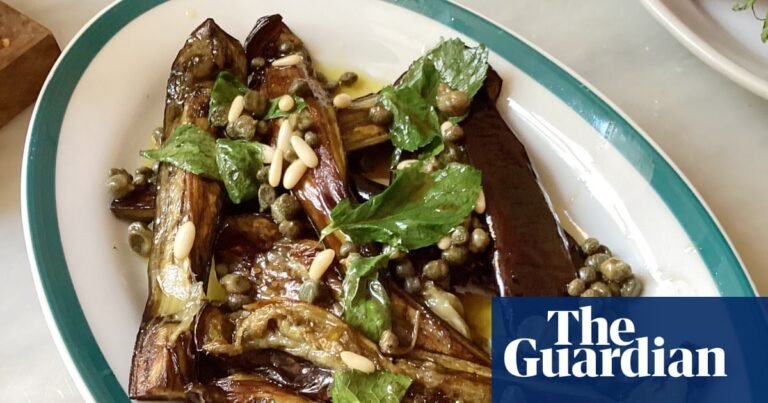The heaviest cookbook I own is Profumi di Sicilia, which I bought from a secondhand bookshop in Tor Marancia the same afternoon I twisted my ankle. The accident had nothing to do with the 3.1kg book, which was already safely on the back seat of the car by the time I didn’t notice the kerb or the cyclist. Years on, and the scene repeats on me whenever I see the cream cover of not just the heaviest, but maybe the most handsome cookbook on my shelves. Written by the journalist Giuseppe Coria and first published by Vito Cavallotto Editore in 1981, Profumi di Sicilia is an encyclopaedic exploration of Sicilian regional cooking – the smells, ingredients, recipes, folklore, trivia, traditions and origins. A significant part of the book’s great beauty is the photographs of ingredients, dishes and scenes by Melo Minnella, which saturate the pages with colour and which appear in pairs every eight pages of text.
Broken into many familiar chapters and subchapters, with small line drawings – a snail, bowl, potato or flask – the hundreds of recipes are in paragraph form, with many containing no quantities at all – just a description of how to put ingredients together to make X. Others, meanwhile, have specific quantities included in the descriptive paragraph, but always with plenty of leeway; Giuseppe’s ability to judge when a reader/cook needs general advice and when they need specific quantities is not just impressive, but inspiring.
The great number of recipes for each ingredient, which run into each other in narrative style, also makes the book a good, practical source of inspiration when you have an ingredient you are not quite sure what to do with, and hope the solution involves things you already have in the house. Last week, that was aubergines, which are now available all year, I know, but which are at their best from July to September (and also plentiful and, therefore, good value). Giuseppe has 25 aubergine recipes, and my favourites include braised in olive oil with potatoes and mint, as part of a caponata with capers and pine nuts, and “in agrodolce”. This week’s recipe is a mix of all three.
Giuseppe suggests honey as the dolce (sweet) element, alongside red-wine vinegar to provide the agro (or the sour/acidic balance). Warming the two in a frying pan is ideal, because there is then plenty of space to roll the roast aubergine wedges in the dressing before adding the capers, pine nuts and mint, which is a natural and feisty partner for the velvet texture of the veg.
Much like caponata and scapece, this is best left to sit for at least an hour before eating, turning the aubergine wedges a few times so they sop up the dressing. Sweet-and-sour aubergines with capers, pine nuts and mint goes spectacularly well with lamb chops (mint sauce lovers will appreciate this), as well as with roast chicken or hard-boiled eggs. Alternatively, serve it alongside other room temperature dishes such as tabbouleh, chickpea and roast red pepper, or a tomato salad.
Sweet-and-sour aubergines with capers, pine nuts and mint
Serves 4
2 large or 4 slender aubergines
Olive oil
Salt
2 tbsp red-wine vinegar
2 tbsp honey, or sugar
2 tbsp small capers
1 tsp pine nuts, or chopped almonds
1 handful fresh mint leaves, left whole is small, ripped if large
Pull the stalks off the aubergines, then cut them into long pieces (quarters or eighths, depending on the size of the aubergines). Rub with the olive oil and some salt (hands are the best tool for this), then arrange on a tray and bake 190C (170C fan)/375F/gas 5 for 25 minutes, turning two or three times, until golden, soft and wrinkled.
Meanwhile, warm the vinegar and honey in a frying pan, tasting to make sure that it is both sweet and sour to your liking. Add six tablespoons of olive oil and taste again. Add the roast aubergine in batches, turning until they glisten, then lift on to a serving plate, leaving most of the sauce in the pan.
Add the capers, nuts and mint to the sweet-and-sour sauce, heat for a minute, then pour over the aubergines. Leave to sit for at least 30 minutes, turning occasionally, before serving.
